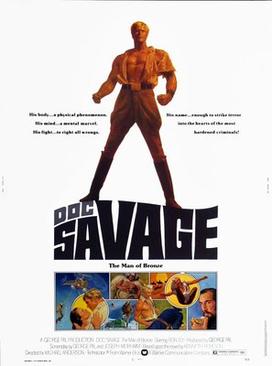Just when I was recently lamenting the lack of a sequel to 2011's The Adventures of Tintin: Secret of the Unicorn from either Peter Jackson or Steven Spielberg along comes the news of a new Tintin film in the works - but not from the source, nor in the format, that one might expect.
 |
| source - IMDb |
 |
| source - IMDb |
 |
| source - IMDb |
The Golden Fleece sees Captain Haddock inherit a ship (the Golden Fleece of the title) from a recently deceased friend, which soon leads to all sorts of adventure in the search for lost treasure (so although ostensibly a stand-alone plot it does seem have been inspired by the two-parter stories The Secret of the Unicorn and Red Rackham's Treasure). Following that movie's success the second film, The Blue Oranges, was released three years later and - in an adventure that definitely owes nothing to the books - sees our heroes come to the aid of Professor Calculus and his friend who have hit upon an invention to cure world hunger, which needless to say soon attracts the attention of some villainous types! A third film was to have been made for release in 1967 but due to the less than positive reviews of The Blue Oranges it was cancelled and so these two cinematic oddities remain for now the only attempts at a live-action Tintin movie.
 |
| source - IMDb |
 |
| source - Wikipædia |
As this looks likely to be a French-led production (although Paramount may well demand some input in return for the copyright and distribution rights) one imagines that the cast will probably be a largely European one, unknown outside the Continent - although perhaps with one or two big names to aid its popularity. With that being the case and with M. Leconte allegedly having found his Captain Haddock and Bianca Castafiore, my own ideas on casting for a live-action Tintin film seem even more redundant than they did previously. However I'm not a man to let that stop me so I will plough ahead and finish this post with my casting director's hat on and my thoughts and suggestions for actors and actresses to play the major roles in any forthcoming live-action production.
 |
| source - Wikimedia Commons / Gage Skidmore |
 |
| Give him a quiff and you're all set. source - Wikimedia Commons / Greg2600 |
 |
| sources - Wikipædia/ Gage Skidmore/ Eva Rinaldi |
 |
| sources - IMDb/ Wikipædia/ Gage Skidmore |
For Professor Calculus only one actor comes to mind - Sir Ben Kingsley. Frankly, to use a modern expression, I think he would smash it out of the park and after Tintin his is probably the one part I would most like to see essayed. Calculus is arguably the most difficult character to approximate, having such a unique look about him (he was modelled on the eccentric Swiss scientist and aeronaut Auguste Piccard - another subject for a standalone post, methinks!) so as well as being close in terms of looks and stature, requiring less make-up, I reckon Sir Ben's superb acting skills should be more than up to doing justice to the part.
 |
| sources - Wikipædia/ Gage Skidmore/ iDominick |
The characters of Thomson & Thompson are equally difficult to cast, I feel, not only for their distinctive appearance but also for the fact that they look identical despite not being twins (that being the joke). So does one go with a pair of brother actors like the Wilsons (Owen, Luke and Andrew), the Hemsworths (Chris, Liam and Luke) or the McGanns (Stephen, Joe, Paul and Mark) or two unrelated chaps who resemble one another (and more so with the aid of make-up/ prosthetics)? On balance I favour the latter option and in this instance I would stick with Simon Pegg, who played one half of the "Twins" with long-standing comedy partner Nick Frost in the 2011 film, but this time pair him with noted Welsh actor Michael Sheen. Both actors have the comedy credentials to really bring the characters to life and I have a suspicion the two would really spark off each other in the roles.
 |
| sources - Wikipædia/ Garry Knight/ Diggies99 |
Two actresses again spring to mind as "The Milanese Nightingale", aka Bianca Castafiore and Captain Haddock's constant nuisance. Top of the list would be Emma Thompson, whose great range includes a healthy dose of comedy and whimsy which could be brought to bear perfectly in the role. Her ability to play character parts (e.g. Nanny McPhee) also makes her a shoo-in for this kind of portrayal I fancy. Second choice would be Jennifer Saunders, who likewise has many of the same qualities and would be equally adept at applying them to the character of Señora Castafiore.
 |
| source - Pinterest |
Those, then, would be my choices for the main cast of a live-action Tintin flick (and if you're reading this, M. Leconte - no charge). Regardless of who does play the roles of Tintin & Company I sincerely hope that this latest production has legs and makes a successful transition to the big screen sooner rather than later, bringing everyone's favourite boy reporter back into the limelight - maybe in time for his 100th birthday in 2029. Bon chance, M. Leconte - I shall be watching the progress of this one with a great deal of interest.
***Would you look forward to a new live-action Tintin film? What do you think of my Tintin & Co casting choices? Who would you like to see have a go at essaying Hergé's colourful characters? Let me know in the comments below!***













